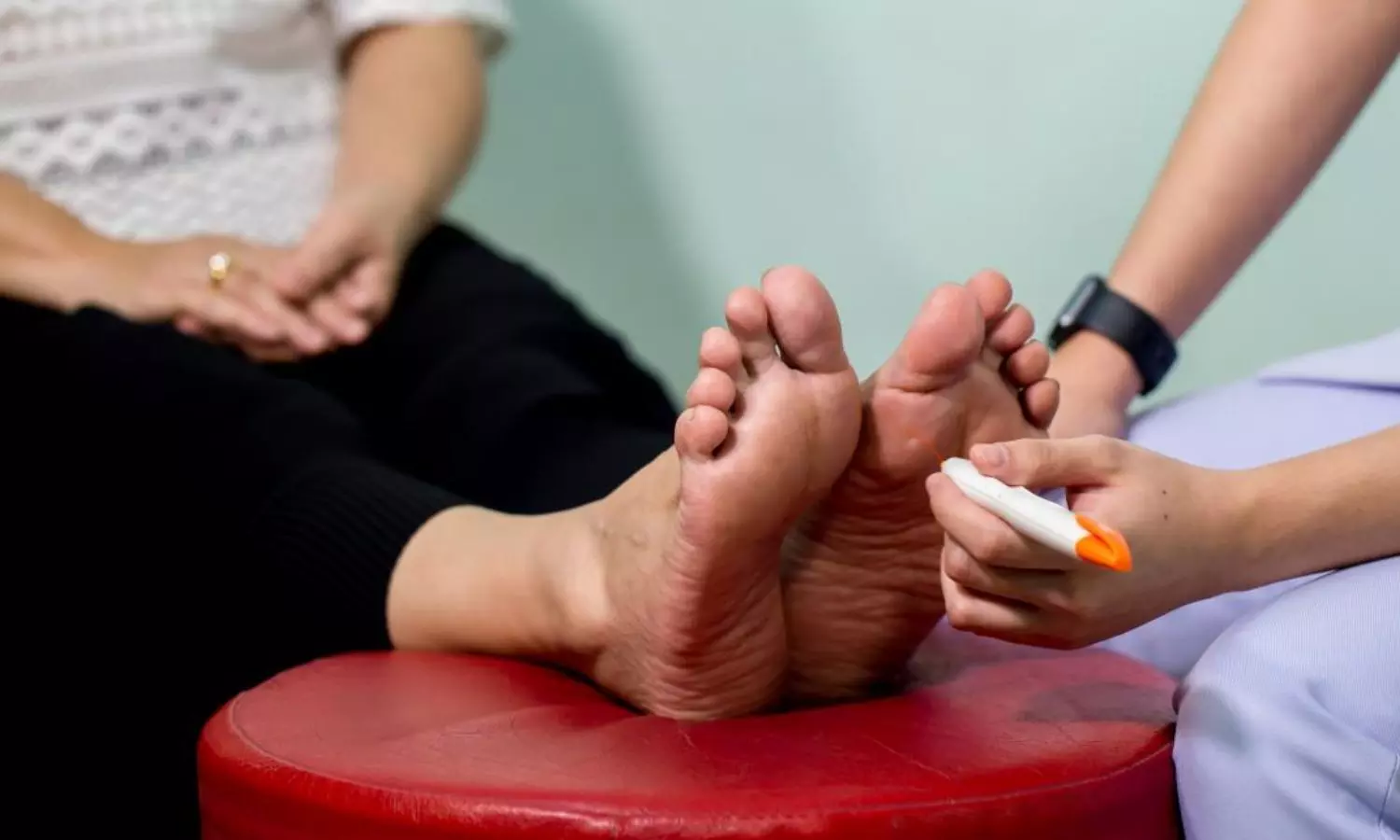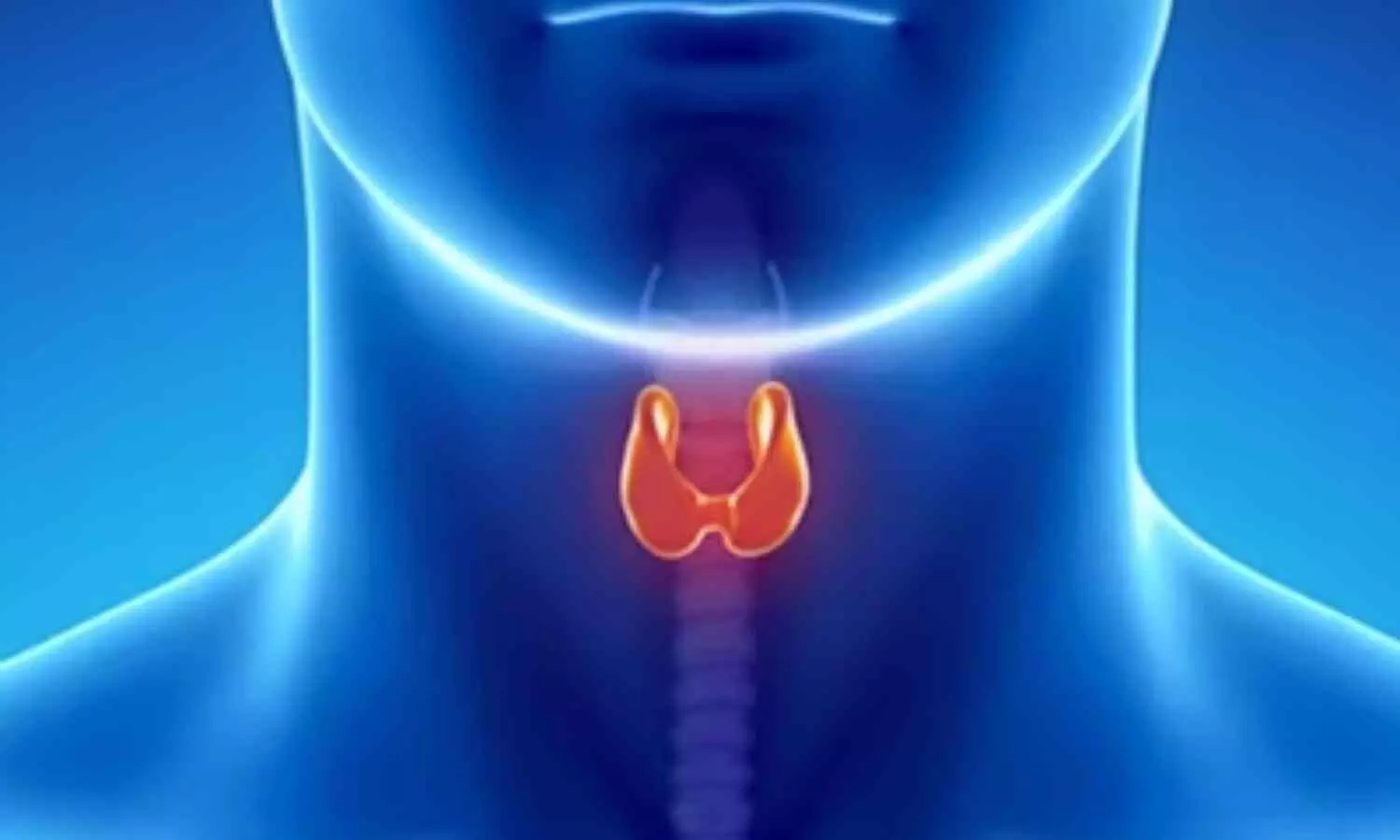Lower levels of Free Triiodothyronine tied to Peripheral Neuropathy in Diabetics, suggests study

A groundbreaking study found that
low levels of free Triiodothyronine are a risk factor for peripheral neuropathy
in type 2 diabetics, as per results that were published in the journal
Diabetes, Metabolic Syndrome and Obesity: Targets and Therapy.
Diabetic peripheral neuropathy
(DPN) is a common cause of neuropathy worldwide. Literature shows that thyroid
function abnormality can affect glucose metabolism, leading to complications in
type 2 diabetics. Triiodothyronine (T3), one of the main active ingredients of thyroid
hormones, is necessary for nerve survival. Previous research has shown that
free triiodothyronine is a predictive factor for peripheral neuropathy in
diabetics. As the role of free triiodothyronine (FT3) in nerve injury is not
elucidated, researchers conducted a study to investigate the effect of FT3 on
DPN, particularly on the conduction velocity of nerve fibers in T2DM patients
without thyroid disease.
A cross-sectional study was
carried out at the Department of Endocrinology, The First Affiliated Hospital
of USTC, by recruiting 121 patients with T2DM. Among these, 64 were diagnosed
with DPN, while 57 were not diagnosed with DPN despite having T2DM (controls).
Neuropathy caused by any cause other than diabetes was excluded from the study.
The participants were divided into the control group and the DPN group. Clinical
parameters like age, gender, diabetes mellitus (DM) duration, and biochemical
parameters were collected for each patient. Additionally, nerve conduction
velocity was tested using neurophysiological methods, such as an electromyographic
evoked potential meter. Correlation and regression analyses were employed to
examine the relationship between the concentrations of FT3 and DPN. Binary
logistic regression analysis was carried out to investigate the risk factors
for DPN in T2DM patients. Multiple linear regression analyses were performed to
explore further factors influencing nerve conduction fiber velocity.
Findings:
- The DPN patients showed increased HbA1c and
low-density lipoprotein cholesterol (LDL-C) levels (P=0.001 and 0.042), as well
as decreased concentrations of FT3 (P=0.042) when compared to the controls. - FT3 levels were positively associated with the
motor and sensory fibers conduction velocity of the Ulnar nerve and the motor
conduction velocity of the Tibial nerve, with or without adjustment for HbA1c
and LDL-C. - As per the multiple linear regression analysis,
decreased FT3 levels may influence the motor and sensory fibers’ conduction
velocity of the Ulnar nerve and the motor conduction velocity of the Tibial
nerve. - The binary logistic regression analysis
demonstrated that decreased FT3 levels are one risk factor for DPN in T2DM
patients.
Thus, this is the first study to
report the association between FT3 and DPN in terms of specific nerve fiber
injury in T2DM patients. The study concluded that lower FT3 concentration
is a risk factor for DPN in T2DM patients. The study underscores the importance
of monitoring the FT3 levels in diabetics for early identification of DPN. The
authors also suggested that further research may be necessary to identify
diagnostic criteria and treatment thresholds in diabetics with peripheral
neuropathy.
Further reading: Chen Y, Sun L,
Chen M, et al. Lower Free Triiodothyronine is a Risk Factor of Diabetic
Peripheral Neuropathy in Patients with Type 2 Diabetes Mellitus. Diabetes
Metab Syndr Obes. 2024;17:4407-4415. Published 2024 Nov 25.
doi:10.2147/DMSO.S489204.




